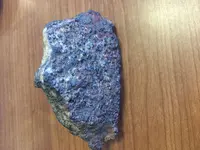gollum
Gold Member
- Joined
- Jan 2, 2006
- Messages
- 6,770
- Reaction score
- 7,734
- Golden Thread
- 0
- Location
- Arizona Vagrant
- Detector(s) used
- Minelab SD2200D (Modded)/ Whites GMT 24k / Fisher FX-3 / Fisher Gold Bug II / Fisher Gemini / Schiebel MIMID / Falcon MD-20
- Primary Interest:
- All Treasure Hunting
Look. If you throw stuff out there it is up for scrutiny. If you have answered the same old questions so many times why don't you just make a document where you can cut and paste from? But make it a legit response not a rasher full. If the internet is too much for you, then you should consider your options. I in no way mean to imply you should give up, just man up.
More of a man than you could ever hope to achieve. You telling me to "man up" is a little like the pot calling the kettle black! Why don't you hike up your skirt and take a walk in the mountains and look for yourself. Maybe try a library.
Heck, I even sent you privately a link to Ron Feldman's LDM Forum where all that stuff we keep telling you has been hashed and rehashed can be easily searched, but yet you still come here claiming no responsibility for doing anything yourself except asking us. HAHAHA
...and you're telling me to man up? HAHAHA Your a laugh riot! Like I said, You'll go far!
You know what. Repeating all this same crap over and over is REALLY boring. I rechecked previous posts and all you seem to be doing is causing drama. I'm done. IGNORE
Mike
Amazon Forum Fav 👍
Last edited:




 and chill out,theres no point in getting all worked up over something that is so trivial, It really doesn't matter any way in the long run.
and chill out,theres no point in getting all worked up over something that is so trivial, It really doesn't matter any way in the long run.

